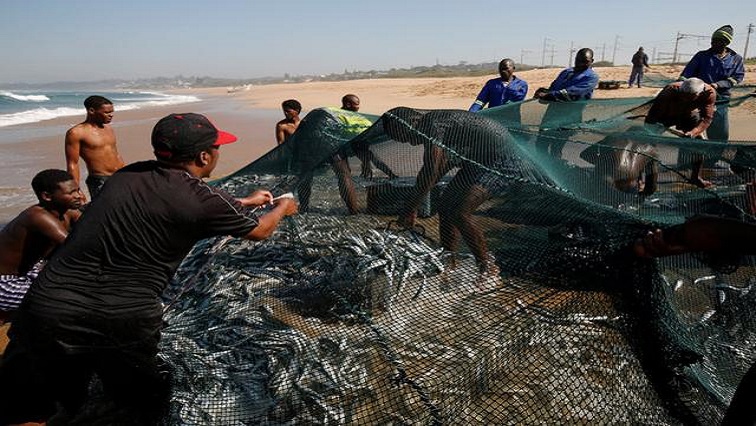After some good sardine catches over the past few days since the first pilot shoals reached the KwaZulu-Natal coast, seine netters say they are at the mercy of the tides and weather to catch the silver delicacies.
A commercial fisherman of 30 years, Harris Naidoo from Park Rynie on the South Coast, says they spend a lot of time waiting for spotters to locate shoals, and the right conditions to land their catches.
On Wednesday, after three days of decent catches, seine netters came up with empty hands. However, the sardine run can last weeks.
Naidoo explains what signs they look for to locate the much-sought-after fish during the sardine run.
“If the water is a ginger colour, it’s hard to see it. It depends now, if the game fish is with the shoal, and the dolphins, you’ll see them coming up. There’s sprays, and bird activities. Once a bird starts going down on a special spot, you know the sardines are there because the birds don’t dive for nothing. They must dive to see the sardines, and only then they dive. And they’re very clever, otherwise they don’t dive. So that’s one of our good markers.”
Having grown up in a family of commercial fishermen, Naidoo says during the sardine run he gets up at 4 in the morning. By 6 o’clock, they have picked up their crew of 25 to 30 men that help to haul the catch in and crate the sardines.
He says they send a spotter out to drive up and down the coast to look for signs of sardine shoals. And that’s when the waiting game begins. Naidoo says netting sardines depends on several factors like time, tide, and the weather.
“The surf out here; it’s not so bad. It’s very nettable here. But the only thing is the shore break. You see the shore break. The shore break is that white water that is coming in now. That’s a problem. If you net a shoal, you will battle to get that fish out. Because the shorebreak is quite hectic here. And the current. Very heavy. It’s about 10, 20 tons you’re netting at one time, ja.”
Not child’s play
Russell Sadler moved from KwaZulu-Natal to the Eastern Cape to catch calamari there, but each year he and his crew return for the sardine run. Although the sardine run is called the biggest shoal on earth, Sadler says it’s not child’s play.
“Look, all fishing is a bit of a gamble. But at the moment, the sardine run is becoming less and less viable. Just sort of the economic climate itself is a factor I’m sure. That, coupled with the fuel prices, were running extremely expensive outfits here. Which makes it difficult for us to warrant coming back here every year and providing employment, and the cheap source of protein to the middle class, which is essentially where most of this product ends up.”
Meanwhile, several people walked down to the beach, watching the seine netters and the waves to see if the silver fish will make a showing.
“You’ve got National Geographic live. I mean, I’d love to go catch it myself, pull the nets, and feel the adrenaline rush.”
“I’m waiting for fish today. Because yesterday I saw it on the phones. So today I want to see it properly.”
By mid-morning, the seine netters had given up their vigil at Warner Beach to go home empty-handed. They say they will return and try again.
Annual Sardine Run takes place in KZN South Coast:






